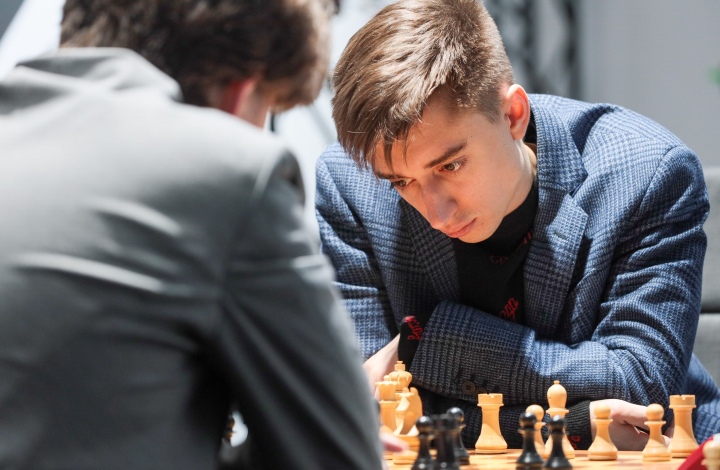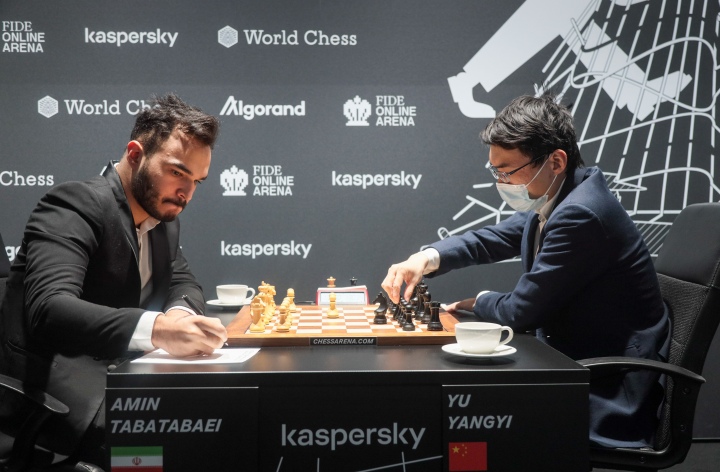Hikaru Nakamura and Richard Rapport are officially in the Candidates 2022. Richard Rapport scored 20 Grand Prix points (7 points in the first leg for reaching semis + 13 points in the second for winning the event), while Hikaru has secured at least the same number (13 points in the first leg for winning the event + at least 7 points in the third leg for advancing into semis). No other player has even a theoretical chance to catch up with them in the FIDE Grand Prix standings.
In the last and decisive round of the pool stage of the FIDE Grand Prix organized by World Chess, Hikaru Nakamura defeated Andrey Esipenko and became the winner of Pool A. He proceeds directly to the semi-final of the Berlin Grand Prix and will wait for his opponent from Pool B.
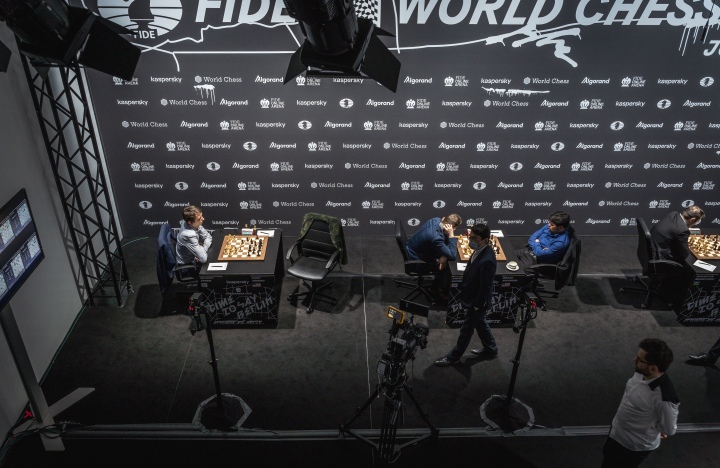
Levon Aronian was the only player who could join Hikaru on tie-breaks, but he lost the game against Grigoriy Oparin. Only after the encounter between Leinier Dominguez and Vincent Keymer ended, it became clear that Hikaru and Rapport had secured their spots in the Candidates. By eliminating Dominguez, Keymer killed all theoretical chances to catch Hikaru and Richard in the Grand Prix. The local hero proceeds to the tie-break in Pool B and will be playing against Shakhriyar Mamedyarov, who quickly drew with Daniil Dubov. Both players have the same number of points.
Sam Shankland and Maxime Vachier-Lagrave ended their deep theoretical discussion in a draw by perpetual check quite quickly, while Wesley So and Alexandr Predke signed a peace a few minutes later. These results set Wesley So up for a play-off for first place in pool C against Sam Shankland.
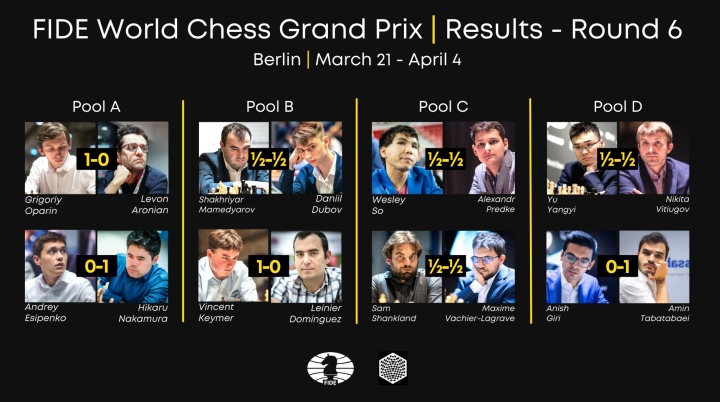
Pool A
Grigoriy Oparin came well-prepared today and managed to get a complicated position out of the opening against Levon Aronian. He chose a relatively rare line with 11.Bf4 and was feeling it was easier to play this position for White. The American GM was unhappy with the way he played today and noted it was a one-move blunder in the game. He completely missed White’s 20.Ba5, which was a hard blow for Black as his position just fell apart a few moves after.
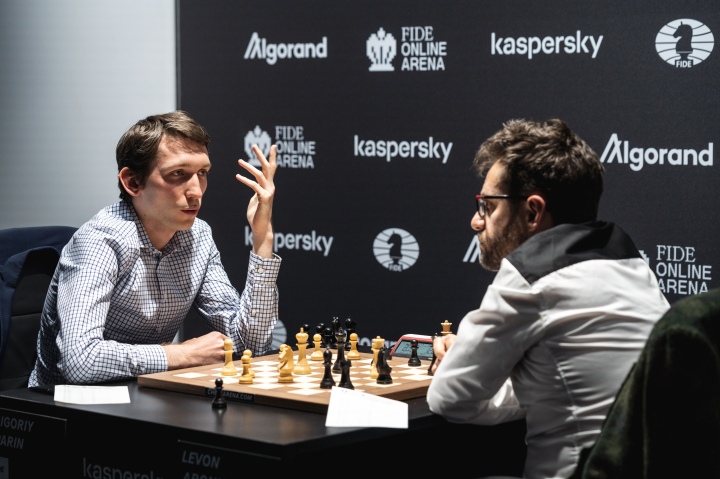
Andrey Esipenko chose to play the Bishop opening and found an interesting way to complicate the position. He created some threats on the kingside, and his position looked quite promising. Esipenko was sure he had some winning chances, but it was unclear where he could have improved his play. It turned out Hikaru didn’t feel the danger at first. “I didn’t feel it was getting dangerous until there were f4, g4 and Nf5 on the board. The great thing about the position is that no matter whether I’m lost, or I’m completely fine, I had only 1 or 2 choices on every move, and I just had to find a good move,” said Hikaru after the game. He thought that 27…f5, and 29…Nh5 were critical moves and he felt after that point the position should be a bit worse for Black.
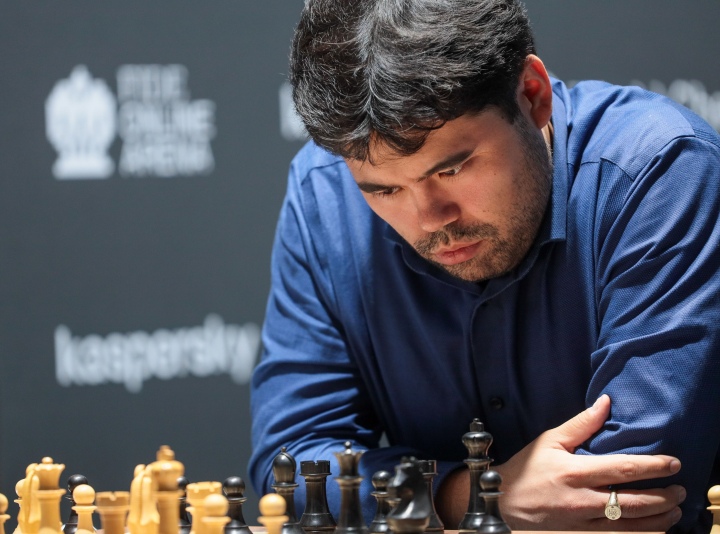
Esipenko was still hoping to win the game at the moment when it was his last chance to make a draw. On the move 35, he could have traded the rooks and transferred the game into the drawish ending. Instead, he chose a more ambitious plan that backfired immediately, as Hikaru consolidated his forces and scored a victory.
Pool B
Shakhriyar Mamedyarov and Daniil Dubov drew in 13 moves after a three-fold repetition. Shakhriyar was not happy with his position out of the opening and decided to sign a peace and await the result of the Keymer-Dominguez game to learn whether he gets to play tiebreaks tomorrow.
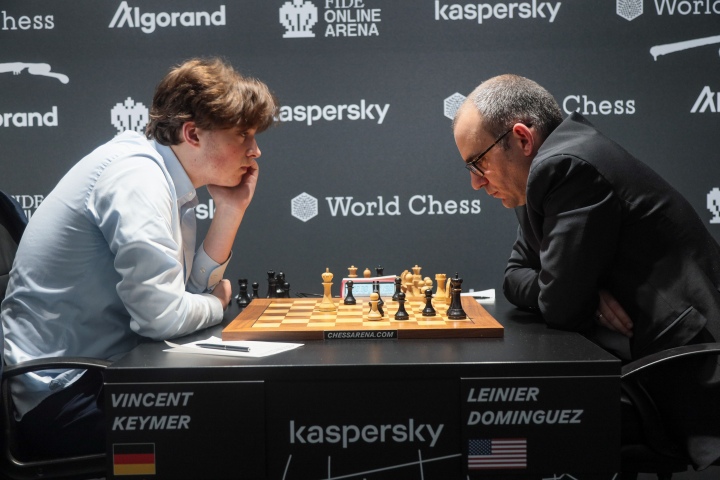
The local hero Vincent Keymer pleased his fans with one more victory in the tournament. He got a comfortable position with White out of the opening against Leiner Dominguez and managed to regroup his forces, creating unpleasant pressure on the kingside. After a couple of inaccurate moves by Leinier his position became dangerous, and the American decided to go for a forced line which resulted in the lost ending. Vincent was very happy after his victory and that he managed to squeeze into the tiebreak tomorrow.
Pool C
Maxime Vachier-Lagrave knew the entire line from the game until the end and spent just a few minutes, while his opponent Sam Shankland was struggling to find the best moves and not to lose “the most embarrassing game of his life”, as he put it in a post-game interview. He got clearly caught in the Grunfeld Defence, which is the main weapon of MVL and thought he would lose this game with Maxim not making even one move on his own. “Ï was just lucky that the most obvious moves of White were the good ones; otherwise, I thought I could lose immediately,” explained Sam in a post-game interview.
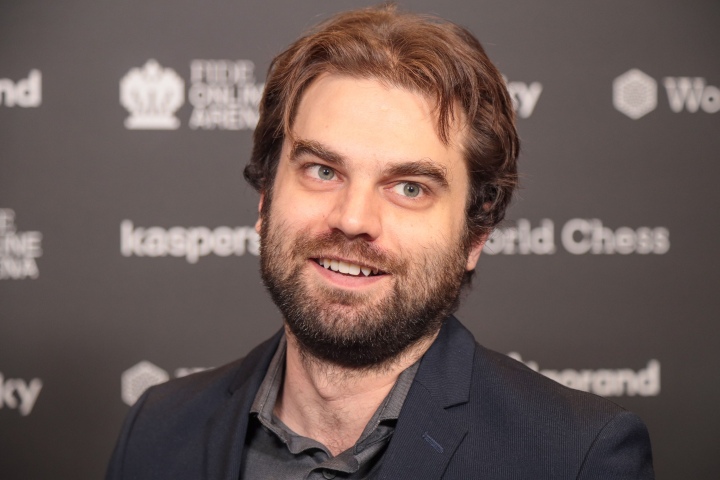
After the game Maxime Vachier-Lagrave spoke about his participation in the FIDE Grand Prix series organized by World Chess: “The result is bad and of course, it is more painful because I’ve been putting all my focus on this Grand Prix for the past few months. Some things were working out, but some were definitely not clicking in terms of my play.”
After the game, Maxim and Sam were discussing the possible scenarios for the second game from Pool C So – Predke. Had Alexandr won the game, Sam could have qualified for the semifinals immediately. “If Predke can be my hero, that would be great. If he wins today, I will buy him dinner, drinks, whatever he wants!” said Sam with a smile.
However, So and Alexandr Predke finished their game in a draw.
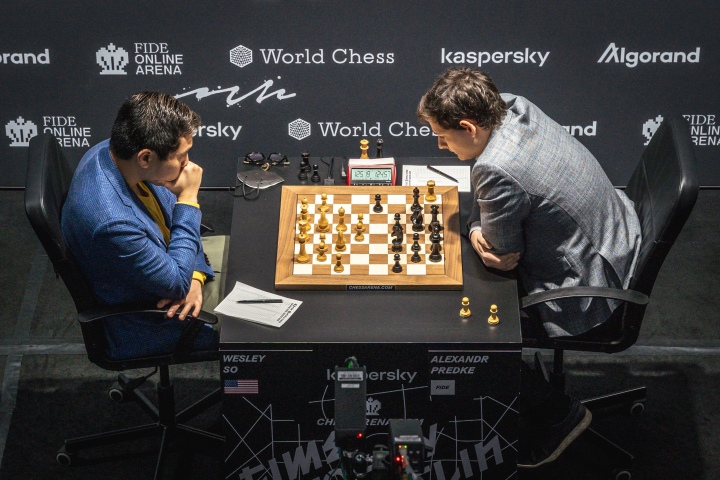
Alexandr Predke played creatively in the opening and sacrificed one more pawn in the tournament by playing 14…Nbd7. Wesley So was happy with his position as he had a bishop pair and a good knight on d5. The American was putting constant pressure on his opponent, but Alexandr defended precisely and managed to hold his position. “I underestimated his idea of Qa2 and Qa3, which was strong. My opponent just played very well today”, said Wesley after the game.
Pool D
Yu Yangyi and Nikita Vitiugov had a theoretical discussion in a topical line of Anti-Marshall. After some complex manoeuvring and exchanges in the center the opponents reached a roughly equal position in which a draw was agreed.
“I think all the game was logical and sort of straightforward,” said Nikita Vitiugov in a post-game interview.
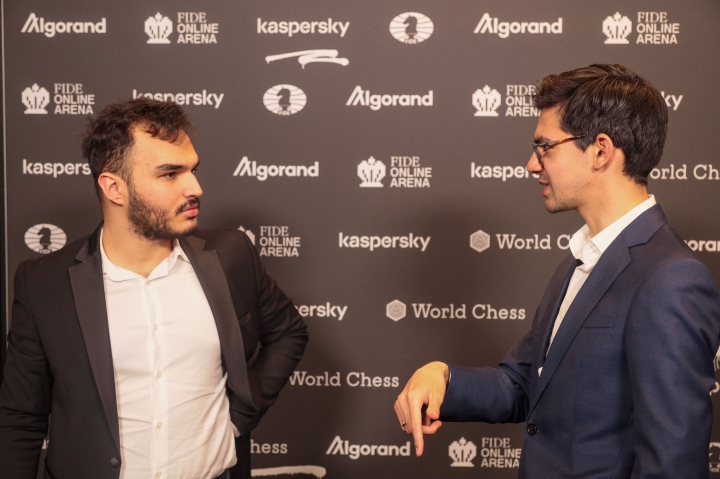
The game Anish Giri – Amin Tabatabaei saw a popular line of Giuoco Pianissimo in which the Iranian demonstrated excellent preparation. Anish seemed hesitant in a balanced position that emerged by move 19 and just could not decide what approach to take. “It was strange; I was sort of ambitious but at the same time, what I did is just very, very bad,” the Dutchman said in a post-game interview. Indeed, Black met erroneous 19.h4? with energetic push in the center 19…d5 and took the game under control. Four moves down the road, the Iranian sacrificed a piece and launched a crushing attack on the kingside.
“After 22…Nfg4, I think White has no chance… this idea of Re6-g6 is unstoppable,” Amin said. That’s exactly what happened in the game. Black’s pieces pounced on White’s king, forcing Anish’s capitulation on move 31. This victory catapulted Amin Tabatabaei into the semifinals.
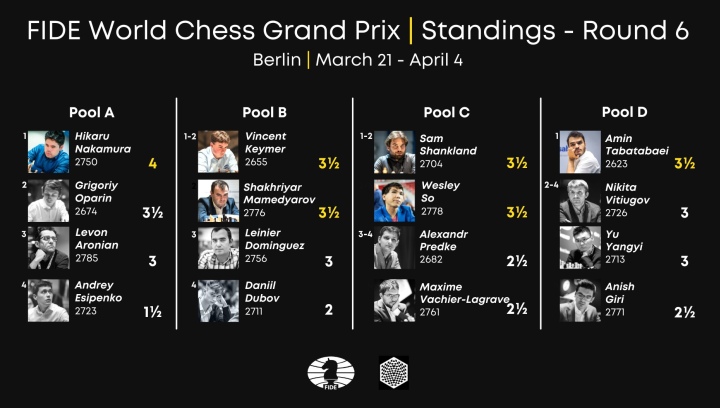
The drawing of lots for tomorrow’s tiebreaks was done after the end of the round, with the help of Vincent Keymer. Sam Shankland and Shakhriyar Mamedyarov will play White against Wesley So and Vincent Keymer respectively:
Sam Shankland – Wesley So
Shakhriyar Mamedyarov – Vincent Keymer
The FIDE Grand Prix Series is brought to you by World Chess.
Leading partners supporting the FIDE Grand Prix Series 2022 include:
Kaspersky as the Official Cybersecurity Partner;
Algorand as the Official Blockchain Partner;
Prytek as the Technology Transfer Partner;
FIDE Online Arena as the official Partner.
Photo: Official Photo FIDE Grand Prix Berlin Press kit and Niki Riga





